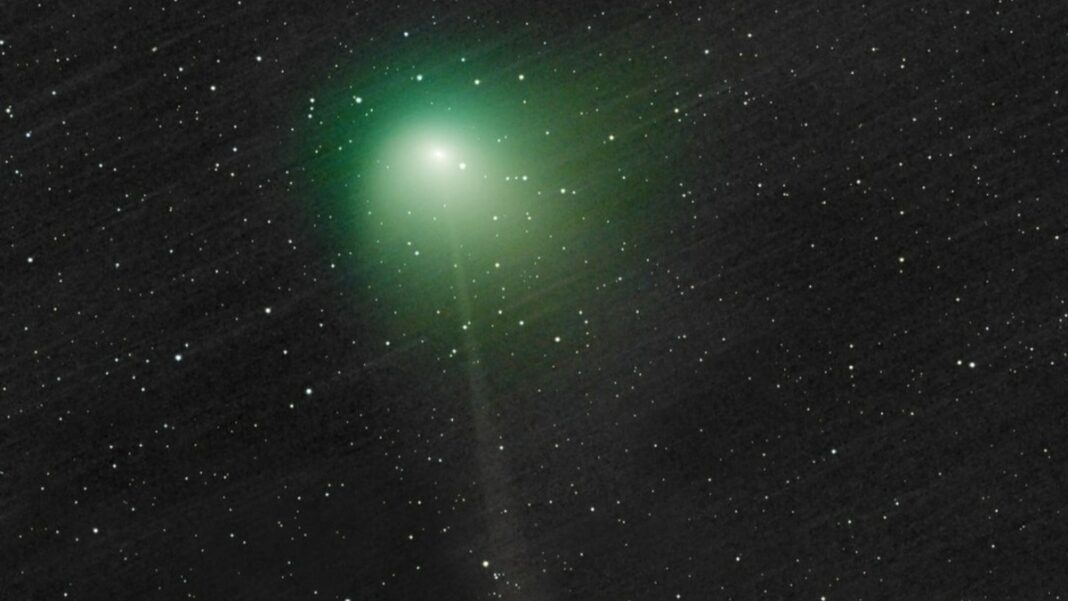UNITED STATES: Comet C/2022 E3 (ZTF), which dazzled people with its greenish hue in the night sky, is on its way out of the inner solar system. It will leave the solar system and come back to our night sky after 50,000 years as it follows a huge trajectory.
Since mid-January, the comet had been visible in the sky for about a month as it made its way outside of Earth’s atmosphere. Its orbit around the Sun lasts for around 50,000 years.
Only in the year 52023 it will make its next visit to Earth, and who knows whether or not humanity will still be here or have entirely changed into another species and moved on to another planet.
The celestial object, which is thought to be a long-period comet, may have originated from the solar system’s outer regions, most likely the Oort Cloud. If the comet’s speed is insufficient to escape the Sun’s gravity, scientists are optimistic that it will be visible again.
According to the Adler Planetarium, if a planet experiences gravitational pull, its orbit may transform to a hyperbolic one, accelerate, and eventually leave the solar system.
When a solar system object’s speed is exactly right for it to eventually escape the Sun’s gravity completely after thousands of years, even minor variations in speed can radically alter the orbit.
But the opposite is also true. Adler Planetarium astronomer Dr Geza Gyuk noted in a statement that if an object is weakly bound, which means it has a closed elliptical orbit but is very large, it can be easily freed and transition into a weakly hyperbolic orbit..
When the comet was initially discovered by telescopes on Earth, astronomers found that Jupiter’s gravity had an impact on it. As a result, they have noted that there is a possibility that this altered orbit would cause the green comet to leave not only the inner planet but also the entire solar system.
The comet stands out for its tadpole-like tail and the greenish tint that surrounds its core. Its tail extends millions of kilometres into space. The comet’s closest approach to Earth’s surface was only 42 million kilometres away on a cosmic scale.
The last time the comet came this close to Earth, Neanderthals were still roaming the earth, and modern people had not yet emerged. The green comet was found on March 2, 2022, by astronomers using the Zwicky Transient Facility telescope at Caltech’s Palomar Observatory in San Diego.
Also Read: NASA Will Test Nuclear Rockets to Send Astronauts to Mars Swiftly



